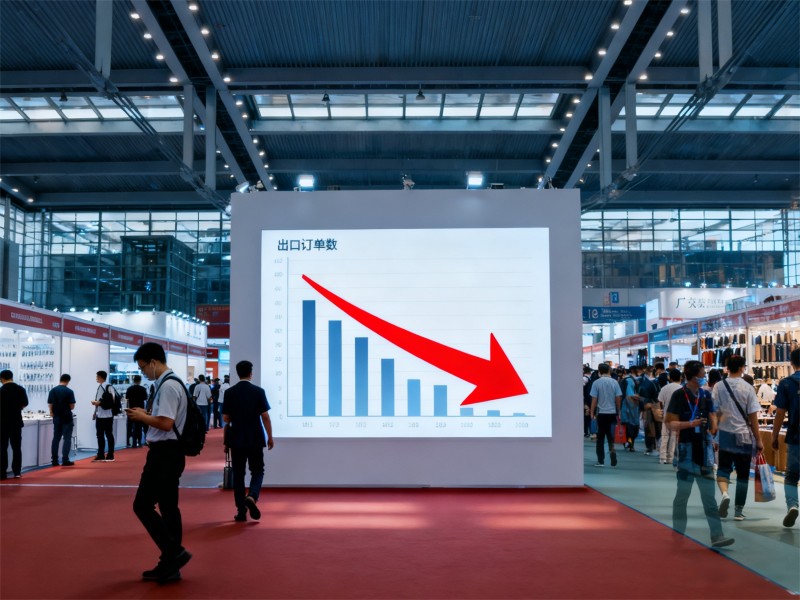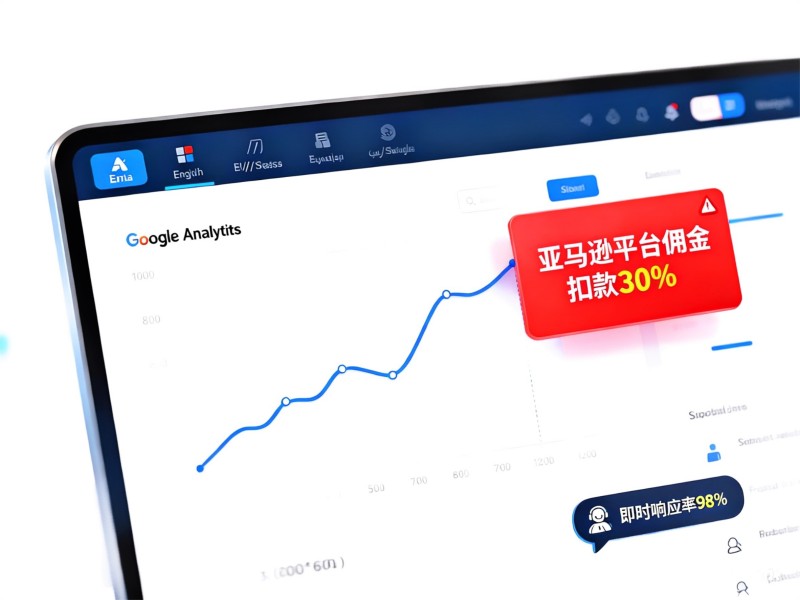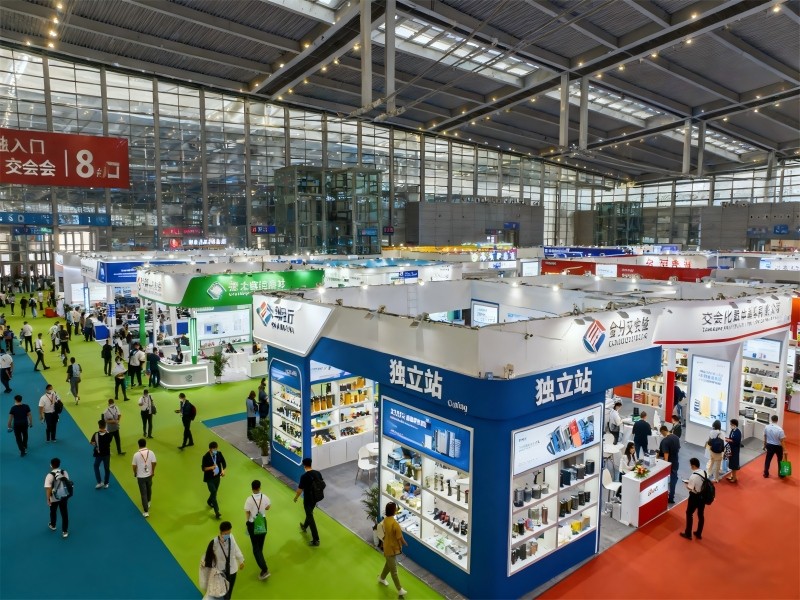Post-Canton Fair Slump: Can Independent Websites Be the Game-Changer for Foreign Trade Professionals?

The Canton Fair’s Chill: What’s the Current State of Foreign Trade?
Phase 1 of the 138th Canton Fair has just concluded, and Phase 2 is in full swing. However, many foreign trade professionals participating in this industry event have felt a distinct chill. From the bustling exhibition halls, the customer density is noticeably lower than in previous years, and the once-crowded, shoulder-to-shoulder scenes are a thing of the past. There has also been a significant change in customer quality—genuine buyers with purchasing power and clear intentions seem increasingly hard to find. These changes serve as a wake-up call, forcing foreign trade professionals to re-examine the current foreign trade landscape.
Traditional Foreign Trade Models: Why the Glory Faded?
Looking back, the development path of the foreign trade industry was relatively clear and straightforward. During that period, foreign trade professionals mainly relied on two mainstream channels to conduct business: B2B platforms and domestic/international exhibitions. As long as they were willing to invest money in these platforms and exhibitions, they could easily gain traffic and convert it into orders—this customer acquisition logic was simple and efficient. Take Alibaba International Station as an example: early foreign trade enterprises that settled on the platform only needed to pay a certain membership fee and publish product information to attract a large number of inquiries from overseas buyers. At exhibitions, enterprises could also achieve fruitful results by renting booths, displaying products, and communicating face-to-face with customers. At that time, the foreign trade market was like a blue ocean full of opportunities, with relatively little competition and strong market demand. As long as enterprises dared to invest, they could reap substantial returns.
Times have changed, and today’s foreign trade market has undergone earth-shaking transformations. The once highly effective international stations and exhibitions are no longer as impactful as before. According to relevant data statistics, the number of inquiries on Alibaba International Station has been declining year by year in recent years. Many enterprises spend a lot of money on advertising slots and rankings but receive very little traffic and orders in return. Regarding exhibitions, the quantity and quality of on-site customers have also dropped significantly. Many participating enterprises report that the number of business cards collected during exhibitions has decreased sharply, and genuine buyers with purchasing intentions are even harder to find.
The main reason for this phenomenon is the fundamental change in overseas buyers' procurement logic. Around 2020, the global digitalization process accelerated, and the popularization of the Internet made information access more convenient. Over 90% of buyers no longer send inquiries merely after seeing advertisements, as they did in the past. Before making purchases, they first search for relevant information online independently and conduct comprehensive background checks on suppliers. They pay attention to multiple factors: whether the company is reliable, whether it has an official website that can be searched, whether there are visual cases, whether social media is regularly updated, whether it is truly engaged in the industry, and what its industry reputation is like. For example, an American buyer looking for clothing suppliers will first enter relevant keywords on search engines like Google to check the official websites of suppliers appearing in the search results. Then, they will search for the supplier’s accounts on social media platforms to view published content and customer reviews. They may also inquire about the supplier’s reputation and credibility from peers. Only after fully understanding and verifying the supplier will they consider further contact and procurement. These series of changes indicate that traditional foreign trade models can no longer adapt to the new market environment. Foreign trade enterprises must seek transformation and innovation to gain a foothold in the fierce market competition.

Procurement Logic Shifts: How Should Foreign Trade Professionals Respond?
Around 2020, a fundamental shift occurred in the procurement logic of the global foreign trade market. Behind this shift is the acceleration of the global digitalization process and the rapid development of Internet technology. According to relevant research data, after 2020, over 90% of buyers no longer rely solely on advertisements before purchasing; instead, they choose to search for relevant information online independently. They use search engines such as Google and Bing to enter product keywords, supplier names, and other information to collect data extensively.
Today, there is an added trend of "asking AI when in doubt." Artificial intelligence tools like ChatGPT have become new channels for buyers to obtain information. Buyers ask AI about product knowledge, market conditions, supplier recommendations, and other questions, leveraging AI’s powerful data analysis and information integration capabilities to quickly obtain comprehensive information. For example, a German electronic product buyer will first search for "high-quality Chinese electronic product suppliers" on Google before purchasing, checking the official websites, product introductions, and customer reviews of suppliers in the search results. Then, they will ask ChatGPT "how to choose a reliable electronic product supplier" and refer to AI’s suggestions. They may also search for relevant topics and groups on social media platforms to exchange experiences with other buyers.
At the 138th Canton Fair, many foreign trade enterprises also truly felt the impact of this change in procurement logic. Some enterprises found that although they displayed high-quality products at the exhibition, customer attention remained low without effective online promotion and comprehensive online information display. For instance, a foreign trade enterprise producing furniture had an exquisitely decorated booth and high-quality products at the exhibition, but few customers came to inquire. Through communication with potential customers, they learned that it was difficult to find relevant information about the enterprise online, leading to doubts about the enterprise’s strength and credibility. This caused the enterprise to miss many potential cooperation opportunities.
On the contrary, enterprises that focus on content SEO, independent website construction, and social media operation achieved remarkable results at the Canton Fair. Take a technology enterprise in Shenzhen as an example: before participating in the Canton Fair, it enhanced its online visibility and influence by optimizing website keywords, publishing high-quality blog posts, and conducting precise promotion on social media platforms. At the Canton Fair, many customers stated that after learning about the enterprise’s products and services online, they developed a strong interest and specially came to the exhibition to discuss cooperation further. In the end, the enterprise reached cooperation intentions with multiple customers and signed a large number of orders at the Canton Fair.
These cases fully demonstrate that in today’s era of changing procurement logic, foreign trade professionals must respond proactively by investing time and energy in content SEO, independent websites, and social media operation. By optimizing website content to improve search engine rankings, making it easier for customers to find them. By building professional independent websites to showcase enterprise strength, product advantages, and successful cases, enhancing customer trust. By conducting continuous operation and promotion on social media platforms to establish good interactive relationships with customers, understand customer needs in a timely manner, and improve brand visibility and influence. Only in this way can they win customers’ favor in the fierce market competition and obtain more orders and business opportunities.

Traffic Is Precious, But Trust Is Priceless
In the past foreign trade model, the combination of Alibaba and exhibitions was the main channel for many enterprises to obtain orders. This model indeed achieved remarkable results at that time, bringing a large amount of traffic and business opportunities to foreign trade enterprises. However, in essence, it was a one-time consumption model. Enterprises invested money in a given year and could obtain corresponding traffic and exposure that year, thereby potentially securing orders. Once the next year arrived, if the enterprise no longer invested money, the previously accumulated traffic and exposure would immediately return to zero, and the enterprise would need to re-invest a large amount of money to acquire new traffic.
Take a traditional foreign trade enterprise as an example: it invests hundreds of thousands of yuan annually in Alibaba International Station membership fees, advertising costs, and expenses for participating in various exhibitions. In the year of investment, the enterprise can indeed obtain a certain number of inquiries and orders. However, due to the increasingly fierce market competition, peers have increased their investments one after another, and the enterprise’s advantages have gradually been eroded. In the next year, if the enterprise does not increase investment, its ranking on the platform will drop, and the booth location at exhibitions may not be as good as before, leading to a significant reduction in traffic and orders. This unstable customer acquisition method keeps enterprises in a passive state, requiring continuous large-scale investments to maintain business operations.
Today, with the development of Internet technology and changes in the market environment, the model of "official website + social media content" is gradually becoming a new choice for foreign trade enterprises. The core of this model lies in accumulating digital assets. By continuously outputting valuable content, enterprises can build their brand image and professional reputation, thereby establishing trust in the minds of customers. Take a technology enterprise in Shenzhen as an example: it began to focus on official website construction and social media operation several years ago. It invested a lot of time and energy in optimizing the website’s design and content to make it more in line with user experience and search engine optimization requirements. At the same time, it continuously published high-quality content such as product introductions, technical sharing, and industry trends on social media platforms such as Facebook, LinkedIn, and YouTube. After several years of accumulation, the enterprise’s official website has gradually risen in search engine rankings, and its social media accounts have accumulated a large number of fans and followers. These digital assets have brought a steady stream of traffic and potential customers to the enterprise. On one occasion, a European customer searching for relevant products on Google saw the enterprise’s official website and social media content. Through in-depth understanding of this content, the customer developed a strong interest in the enterprise’s products and services and took the initiative to contact the enterprise for negotiations. In the end, the two parties reached a cooperation intention and signed an order worth millions of US dollars.
For another example, a foreign trade enterprise engaged in clothing attracted a large number of fashion enthusiasts’ attention and likes by publishing exquisite product pictures and matching suggestions on Instagram. These fans not only purchase the enterprise’s products themselves but also recommend them to friends and family around them, forming a good word-of-mouth communication effect. On LinkedIn, the professional insights and industry trend analyses shared by the enterprise’s industry experts have also attracted the attention of many peers and potential customers, further enhancing the enterprise’s brand image and professionalism. These cases fully demonstrate that the "official website + social media content" model allows enterprises’ content to be continuously disseminated and exposed online, gradually accumulating customer trust and recognition, and becoming a trust hub in customers’ minds. Once this trust is established, it is highly stable and sustainable, enabling enterprises to achieve long-term business growth and development. Compared with the previous traffic competition model, the trust competition model focuses more on shaping enterprises’ internal strength and brand value, allowing enterprises to stand out in the fierce market competition and achieve sustainable development.

Layout Independent Websites: The Future of Foreign Trade Is Promising
Although the current foreign trade market faces many challenges, foreign trade professionals do not need to be discouraged. In this era of profound changes, crises are often accompanied by opportunities. It is not too late to start building foreign trade independent websites, carefully create content on social media platforms such as Facebook and LinkedIn, manage corporate image on YouTube and TikTok, and promote brands on Instagram.
Judging from the signals released by the 138th Canton Fair and the current industry trends, customers in the next three years are searching for reliable suppliers like you on search engines such as Google and ChatGPT. Take the company’s independent website https://www.foshaneverrising.com as an example: during its construction, full consideration was given to user experience and search engine optimization requirements. The website interface is concise and beautiful, with detailed and comprehensive product displays. At the same time, it has improved its search engine ranking by optimizing keywords and publishing high-quality blog posts. In terms of social media operation, the company actively shares product information, industry dynamics, and successful cases on platforms such as Facebook and LinkedIn, establishing good interactive relationships with customers and attracting the attention of a large number of potential customers. Through these efforts, the company has gained the favor of many customers at the Canton Fair and reached multiple cooperation intentions.
This fully shows that as long as foreign trade professionals can keep up with the times and actively layout independent websites and social media operations, they can occupy a place in the future market competition. Through independent websites, enterprises can showcase their brand image, product advantages, and corporate culture, allowing customers to understand them more deeply, thereby establishing long-term and stable cooperative relationships. In terms of social media operation, through interaction and communication with customers, enterprises can timely understand customer needs, provide personalized services, and enhance customer satisfaction and loyalty. These efforts can not only bring short-term orders and business growth to enterprises but also lay a solid foundation for their long-term development, helping enterprises achieve sustainable development in the global market and create more brilliant performance.
Summary and Outlook
Amidst the market changes and challenges brought by the 138th Canton Fair, the foreign trade industry is at a crossroads of profound transformation. The decline of traditional foreign trade models, the shift in overseas buyers' procurement logic, and the market trend from traffic competition to trust competition all warn foreign trade professionals that past successful experiences can no longer cope with the current market environment. At this critical juncture, foreign trade professionals must actively seek change and take the initiative to meet challenges.
As new paths conforming to the times, independent websites and social media operations are gradually becoming the key for foreign trade professionals to break through the predicament. By building professional independent websites, foreign trade enterprises can showcase their brand image, product advantages, and corporate culture, allowing customers to understand them more deeply, thereby establishing long-term and stable cooperative relationships. In terms of social media operation, through interaction and communication with customers, enterprises can timely understand customer needs, provide personalized services, and enhance customer satisfaction and loyalty. These efforts can not only bring short-term orders and business growth to enterprises but also lay a solid foundation for their long-term development, helping enterprises achieve sustainable development in the global market and create more brilliant performance.
Returning to our initial question: Post-Canton Fair Slump? Can Independent Websites Be the Game-Changer for Foreign Trade Professionals? The answer is yes. But this requires foreign trade professionals to take action, actively layout independent websites and social media operations, and enhance their competitiveness online. Don’t wait until the market completely eliminates you to regret not making timely changes.
The future of the foreign trade industry is full of challenges but also contains unlimited opportunities. As long as foreign trade professionals can keep up with the times, continuously learn and innovate, and actively adapt to market changes, they will surely find their own development path in this era of transformation and achieve new breakthroughs in their foreign trade careers. Let us work together to embrace a better tomorrow for the foreign trade industry!
